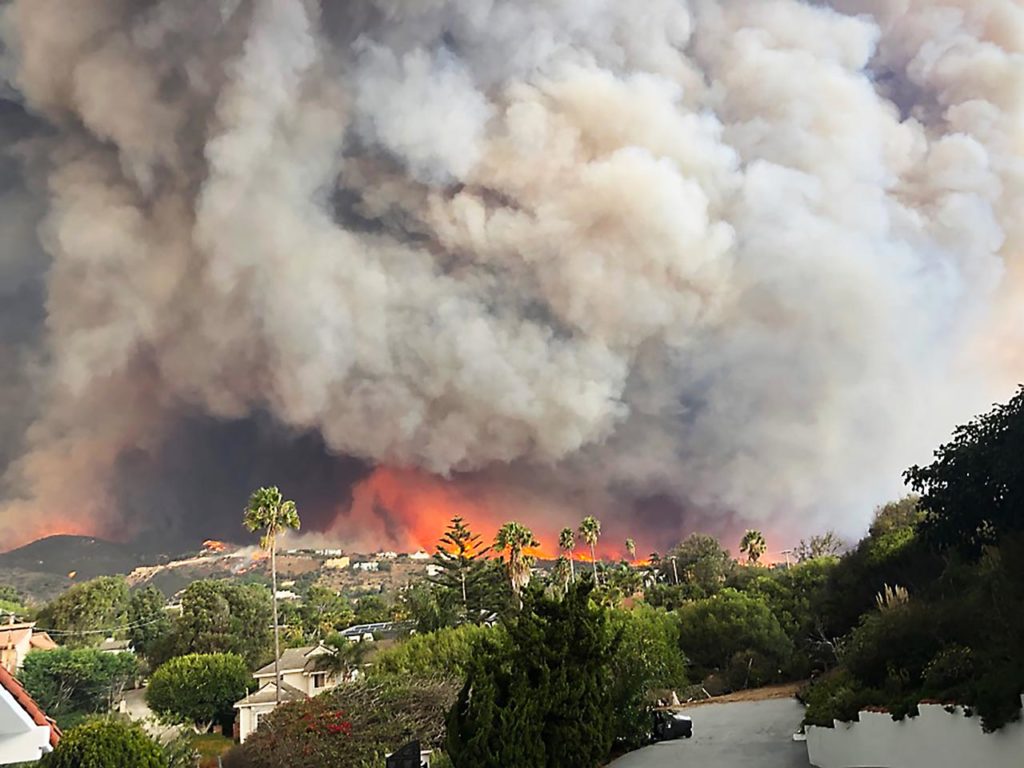
According to statistics compiled by the National Interagency Coordination Center (NICC), from 2011 to 2020 there were an average of 62,805 wildfires each year in the US, impacting an average of 7.5 million acres of land. In 2021 so far we have seen greater than 34,000 wildfires across 23.3 million acres.
Wildfires can occur far from densely populated areas, but the impact on air quality as a result of smoke is significant, even far from the site of the fires, as we’ve seen this summer. And, it’s not only outdoor air that is affected – our indoor air isn’t immune to the impacts from wildfire smoke since outdoor air naturally makes its way inside our homes and buildings.
Wildfire smoke is a relative smorgasbord of compounds that are detrimental to human health – from carbon dioxide, carbon monoxide and nitrogen oxides to particulate matter (PM) of varying sizes. PM 2.5 – or particulate matter with a diameter of 2.5 microns or less – is specifically dangerous because it can enter the human bloodstream through our lungs. A recent study from Harvard University also noted that exposure to elevated levels of fine particle pollution from wildfires may have led to more COVID cases.
So how do we protect ourselves from this mostly invisible threat?
Under normal conditions it is generally a rule of thumb that the outdoor air is cleaner than that indoors. We promote the benefits of bringing as much outdoor air inside as possible because of the resulting health benefits. However, when the outside air is polluted by wildfire smoke, we no longer want it inside. Typically, source control is the number one priority, followed by dilution and filtration. In the case of a wildfire, until it’s stopped at the source, you can’t dilute that air very well, and so the last line of defense is filtration.
Using the best filtration you can is paramount, and the higher the Minimum Efficiency Reporting Value (MERV) rating you use, the better job it will do of removing the particles you’re concerned about – the ones you can see, the ones you can’t, and also the ones you can smell. MERV 13 or higher is recommended to deal with PM 2.5; however, the challenge is that most HVAC systems are not designed to take filters of this grade. Most HVAC systems, in fact, were not designed to be air cleaners and instead their primary role has been air flow, temperature and humidity control.
That is not to say that an HVAC system doesn’t have a role to play – but they are only effective when running and air is passing through the filters. In most homes, businesses and buildings, HVAC systems only activate when temperature or humidity adjustments are required, but by running them constantly – even with a MERV 8 filter – they can effectively remove a percentage of the unwanted particles in the air as it passes repeatedly through the system.
The Indoor Air Hygiene Institute recommends engaging with an expert to learn more about what can be done to mitigate the impacts of a wildfire in your indoor space. Understanding is the key, as only then can building and facility managers formulate the right plan for their space and act with the proper technology.
The tide is turning toward awareness
The pandemic has firmly shone a light on the importance of filtration and this focus is helpful as a mitigation strategy for wildfire too. The filters needed to prevent the spread of COVID-19 are the same filters that are effective against the PM2.5 generated from wildfires.
Schools, daycares and universities located in areas impacted by wildfire smoke are now facing dual challenges in trying to keep employees and students safe from COVID-19 as well as wildfire smoke. It’s especially concerning for schools that do not have central air conditioning, and therefore no filtration, as they prepare to open for the school year. While schools can normally open windows to increase ventilation, when wildfire smoke is nearby it can be dangerous and lead to poor health outcomes. Portable air scrubbers should be used in these circumstances to remove the harmful particles from the air.
Ultimately, it is becoming imperative that building managers monitor indoor air quality regularly, and especially during events such wildfires. We are shifting towards technology and sensors that can provide more than just a snapshot in time of our indoor air quality, and the Institute is doing everything it can to raise awareness of the importance of evaluation, consistent monitoring, and a proactive approach to mitigation. Whatever the outside elements may be, buildings need to be resilient enough to protect the occupants inside. To formulate a plan is essential, and you need an expert to point you in the right direction.To learn how The Institute can help you evaluate and protect your indoor air hygiene, contact us at [email protected]


Ensure you are taking the right steps to provide quality indoor air. Give people the confidence to return indoors.